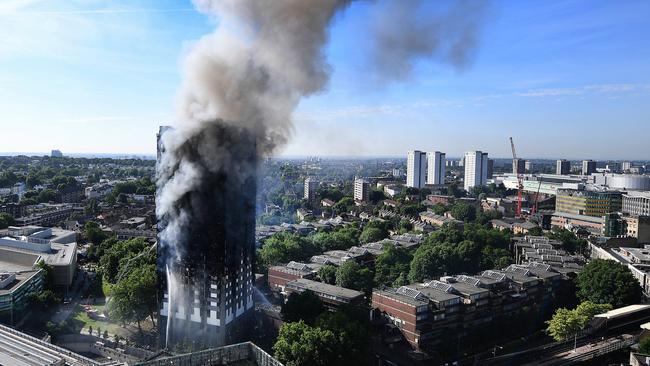Dodgy cladding remains a threat
Dangerous combustible cladding continues to be used in construction of high-rise buildings despite new regulations.

Dangerous combustible cladding continues to be used in construction of high-rise buildings across Australia, despite the introduction of new regulations aimed at preventing a repeat of the Grenfell Tower disaster, which killed 72 people in London in 2017.
While state governments have banned the use of aluminium composite panels — the deadly material that fuelled the Grenfell and other blazes — industry experts are alarmed that governments and regulators have ignored cladding materials that could be equally as dangerous.
Only Victoria has banned not only the use of aluminium composite panels, but also expanded polystyrene, another material commonly used as external walls.
That ban, made last month, is not in place in NSW.
Australian Builder’s Collective Phil Dwyer, who has warned about the dangers of expanded polystyrene products for years, said: “(expanded polystyrene) is an extremely dangerous product and … absolutely rife”.
While there is some debate over the flammability of certain products, Mr Dwyer said, “there is no doubt that either one (aluminium composite or expanded polystyrene is as dangerous as the other, depending on the context”.
“At the end of the day, the blame game is not on — people could lose their lives”.
Victoria Planning Minister Richard Wynne, who devised the new amendment, said “these products are a high risk when used inappropriately or installed incorrectly. That’s why we’ve acted to ban them for new multistorey buildings.” “This ban will ensure new developments are built to the highest standard to keep Victorians safe,” Mr Wynne said.
Expanded Polystyrene Australia executive director Becher Townshend said Victoria’s blanket ban of the material was “demonising the product” but agreed it was inappropriate for high-rise buildings. “There is nothing new in what Victoria has done here, (expanded polystyrene) was never meant to be installed in high rises,” Mr Townshend said.
“They are only appropriate in Class 1 and Class 10 buildings.”
Since Melbourne’s 2014 Lacrosse and 2019 Neo200 cladding fires — both propagated by aluminium composite panel polyethylene cores — calls for the prohibition of expanded polystyrene have grown.
Despite welcoming aspects of the Victorian approach, industry leaders remain sceptical about how far reaching the new ban is, saying it fails to provide certainty for homeowners regarding replacement products.
Australian Institute of Building Surveyors vice-president Wayne Liddy said: “While Victoria seems to have taken a more proactive approach, the ban has raised more questions than answers”.
Even under the Victorian changes, the ban on the expanded polystyrene cladding is not retrospective. “You have to ask yourself, if it isn’t safe to install now, why is the same product installed five years ago being considered fine,” Mr Liddy said.
Regulators have also come under heavy criticism. Bronwyn Weir, a lawyer who co-authored a 2018 report into building compliance for states and territories, says attempts to undermine national codes are a major problem, as manufactures and suppliers seek to flout building regulations.
She also highlighted concerns regarding the role of Conformity Assessment Bodies, agencies set-up to approve the bulk of Australian building products.
Geoff Hanmer, the managing director of architecture firm ARINA, said a history of poor regulation had fuelled the “cladding crisis” from the start.




To join the conversation, please log in. Don't have an account? Register
Join the conversation, you are commenting as Logout